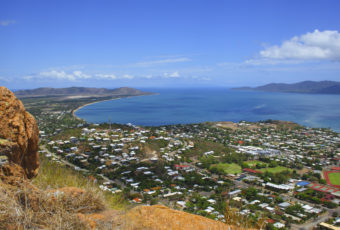Monash Engineering: Minimising drag to maximise results
One of the most exciting parts of the Tour de France for spectators is the tactical “vying for spots” in the breakaway group at the front of the pack.

In trying to better understand the aerodynamic interactions between cyclists, researchers from Monash University and the Australian Institute of Sport studied how riders’ drag was affected by the relative position of multiple cyclists (in a formation).
Nathan Barry, a PhD student from the Department of Mechanical and Aerospace Engineering, said the research, undertaken by the Monash Wind Tunnel Sports Group, was designed to optimize the aerodynamics of elite riders when in a drafting or slipstreaming configuration.
Drafting or slipstreaming happens when two or more cyclists align in a close group. Taking advantage of the lead rider’s slipstream reduces the effect of drag, or air resistance. Drafting can significantly reduce the average energy expenditure required to maintain a certain speed and can also slightly reduce the energy expenditure of the lead rider.
“Typical racing speeds seen in professional cycling are 45km/h and getting up to 65-plus in a sprint, and over 90 per cent of an athlete’s power is expended overcoming drag,” Mr Barry said.
“If cyclists can reduce that drag, it will significantly improve their performance.”
The researchers found that two riders drafting the trailing rider could experience up to a 49 per cent drop in drag and the lead rider up to 5 per cent. When riders were travelling closely side by side or overtaking, the drag could increase by up to 6 per cent above that for a rider travelling alone.
“With the time being a critical factor in winning a stage or even the whole tour, it is important that teams understand how drag works when they are in a pace line such as a small breakaway group, overtaking or travelling side by side with another rider,” Mr Barry said.
Given the many complex interactions taking place in road cycling, the research could help fine-tune team tactics as well as potential interference tactics.
“Small reductions in drag leading to gains in speed across the duration of an event can mean the difference between crossing the finishing line first or second,” Mr Barry said.
This research is part of a Australian Research Council linkage project grant.
About the Department of Mechanical and Aerospace Engineering
In addition to their role of imparting knowledge through their undergraduate teaching programs the department is actively engaged in creating new knowledge through its research activities. It is a large and diverse department consisting of a large academic staff, two industry-focused research institutes, postdoctoral research staff and a significant postgraduate student community.
Through their work, the department is internationally renowned for its teaching expertise, its research output and its facilities. Some of the areas of engineering research specialisation are
- Aeronautical and industrial fluid dynamics (FLAIR)
- Aerospace, turbulence and combustion (LTRAC)
- Composite structures (CRC for Advanced Composite Structures)
- Maintenance technology (MTI)
- Micro/nano solid and fluid mechanics (MNRL)
- Railway technology (CRC for Rail Technology and IRT)
- Robotics and mechatronics (RMRL)
About the Monash Wind Tunnel
The Monash Wind Tunnel is a low-speed automotive aerodynamic testing facility. It is the largest wind tunnel in the southern hemisphere. The facility is open to industry partners, academics and students. Here, researchers facilitate aerodynamic and wind noise research, and help to develop full-scale production vehicles for Australian and international markets.
- Large aerodynamic wind tunnel facility (four test sections)
- 2×2 m cross-section 450 kW wind tunnel (boundary layer tests)
- Six-component force balance system
- Scale model force balance systems
- Multi-channel dynamic pressure measurement system
- High-frequency velocity probes
- Anthropometric manikin
*

































Ask A Question
Ask us about your program of interest, or if you have a question about our services.
CONTACT US TODAY